Premium Only Content
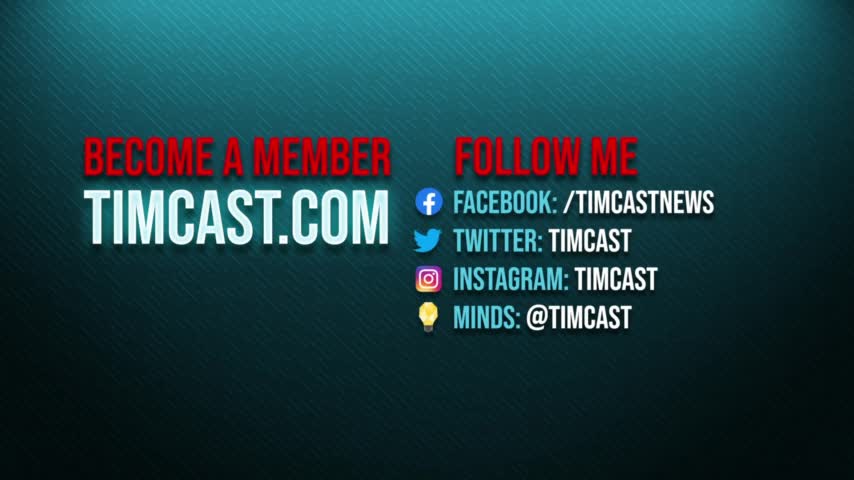
Broken promises. Putin Accused of Threatening NUCLEAR STRIKE
Putin Accused of Threatening NUCLEAR STRIKE As Russia Launches FULL SCALE Invasion Of Ukraine
https://www.greenleft.org.au/content/whats-behind-us-nato-warmongering-against-russia
The current United States-Russia crisis has its roots in Washington’s betrayal of its well-documented promise to Soviet General Secretary Mikhail Gorbachev in the early 1990s to not move the North Atlantic Treaty Organization (NATO) eastward. Made during the breakup of the Soviet Union, then-US Secretary of State James Baker said NATO would not move “one inch” east.
NATO’s existence as an anti-USSR military alliance organised and controlled by the US dates back to the beginning of the Cold War. It has continued since with the expressed purpose to militarily confront Russia.
The US has more than 70,000 troops permanently stationed in European countries. It is planning to use the present crisis to send thousands more, including into former Eastern European countries, along with additional offensive weapons (called “defensive” by Washington) and other military hardware.
See also
The US role in the Russia-Ukraine conflict
Great power rivalry and capitalist crisis
NATO now butts up against Russia and Belarus at the border with Poland and the Baltic countries. The US claims its “right” to also include Ukraine — which has the longest border with Russia — in its military alliance.
This would mean the US-controlled anti-Russian military alliance, including its military hardware and troops, would be up against the whole Western border of Russia, something Russia regards as an existential threat.
Origins of conflict
When Ukraine became independent due to the breakup of the Soviet Union — and the Soviet republics became capitalist due to a social counter-revolution that dismantled the nationalised planned economy — there was no enmity between Ukraine and Russia.
Ukraine agreed that the big former Soviet naval base on the Black Sea in Sevastopol, Crimea, would be leased to Russia. There is a connection from the Black Sea to the Mediterranean through the Bosporus Strait.
Crimea became part of Russia when it was conquered under Tsarina Catherine the Great in late 1700s from the Ottoman Empire. After the creation of the USSR in 1922, it became part of the Russian Soviet Socialist Republic (SSR), as it was populated mostly by Russians, while Ukraine became its own SSR.
Crimea was transferred from the Russian SSR to the Ukrainian SSR in the mid-1950s by Soviet Premier Nikita Khrushchev (himself Ukrainian) for technical and logistic reasons. The move was largely unnoticed by the world since Crimea was still part of the USSR.
No one claimed that Ukraine had “stolen” Crimea from Russia.
By the breakup of the USSR, Ukraine had become a country with roughly 50-50 ethnic Ukrainians and ethnic Russians. Both languages were official state languages.
Ethnic Ukrainians dominated the western part of Ukraine, and ethnic Russians the eastern and southeastern part.
Oligarchs
Due to the workings of capitalism, the economies and politics of Russia and Ukraine became dominated over time by very rich capitalists (known in the West as “oligarchs”).
Ukrainian politics became chaotic, with charges and counter-charges of fraud in elections to choose which “oligarch” would be president and premier.
In 2010 Viktor Yanukovych, a Russian speaker from the east, was declared president in a disputed election. He agreed to extend Russia’s lease on its Black Sea naval base, which was up for renegotiation. This greatly angered Ukrainian nationalists.
In April 2013, Yanukovych sought to sign a treaty of association with the European Union (EU) in search of financial aid. But in November, just as the treaty was about to be signed, Russia offered a better deal on aid and a reduced price on natural gas into Ukraine. The treaty with the EU was scrapped.
Pro-West Ukrainian nationalists revolted and organised protests in Maidan Square in front of city hall in the capital, Kyiv (Kiev), calling for Yanukovych’s ouster. Undoubtedly there were at first many demonstrators who wanted the ouster of all “oligarchs”, not just “oligarch” Yanukovych. But it was the nationalists who dominated.
Included in the demonstrations were fascist nationalists, who looked to the Ukrainian collaborators with the Nazis in World War II for inspiration.
At one point they took over city hall and from its balcony overlooking the demonstrators in Maidan Square, displayed the collaborator’s flag patterned after the swastika. as well as the Confederate flag from the US. This was briefly on television in the US, but thereafter never referred to.
It was clear that the demonstrators saw the fascists as part of their movement.
As a result of the protests, Yanukovych was ousted with support from the military, and fled to Russia in early 2014.
The new Ukrainian nationalist government announced its intention to join NATO, which Russia correctly concluded would mean a NATO takeover of its Black Sea naval base. This caused it to retake Crimea and reject Ukraine joining NATO.
New regime targets ethnic Russians
The Ukrainian government demoted Russian as an official language and restricted ethnic Russians’ rights. There was a rebellion in the east against the new government that launched a bloody war in the region, causing 13,000 deaths and led 400,000 refugees to flee into Russia.
Far-right armed groups were the spearhead of the Ukrainian forces in this war.
The US and the West supported the Ukrainian side, while Russia backed the ethnic Russians’ side.
Eventually a stalemate was reached, with two states founded in the Donbas region that were in the hands of ethnic Russians: the Donetsk and Luhansk People’s Republics. Some skirmishes occurred on the border of Donbas, but there was no overt war.
Both Ukrainian and Russian remain official government languages in the Donbas.
Volodymyr Zelensky, who was not an “oligarch”, was elected president of Ukraine in 2019. While maintaining the position of eventually joining NATO, he has sought to keep the peace.
The fascist groups have not had much electoral support since 2014, but independent analysts say they have maintained support for their domestic policies through street actions.
While Zelensky still supports eventually joining NATO, there is no such move on the horizon.
New situation under Biden
Until US President Joe Biden took office and stepped up the militaristic campaign against Russia in 2021, the Russian government under President Vladimir Putin’s increasing autocratic rule had not been alarmed.
Putin has proposed a federal structure for Ukraine along the lines of the original Minsk agreements of 2014 and 2015. This has been rejected by Ukrainian nationalists and the US because they want the Donbas crushed. That proposal, if implemented, would mean the two People's Republics in the Donbas would have their own elected governments within a united Ukraine.
The US and NATO’s proposed diplomatic solution is for Russia to capitulate.
The Biden administration and US military establishment have declared Russia, along with China, as the US’s main enemies. While the US continues its aggressive stance against China, it is concentrating on Russia today.
The US has renewed the threat of Ukraine joining NATO and become more belligerent.
Putin responded this year by mobilising troops inside Russia along Ukraine’s border and renewing its stance against the threat of NATO’s extension to this border.
However, Zelensky has not threatened to join NATO or to attack the Donbas, and Putin has shown no signs of invading Ukraine, despite the Biden administration’s claims.
There is no media campaign inside Russia — and the media in Russia is tightly controlled by Putin — whipping up the Russian people to prepare for war.
Zelensky has now openly broken with the US, telling it to stop the warmongering. He has also reassured the Ukrainian public there is no threat of war, something all Ukrainian people, both ethnic Russians and ethnic Ukrainians, very much do not want.
At the same time, his government has accepted military hardware from the US and NATO countries.
The Ukrainian people want to keep the peace they have established.
The Biden administration has ignored the Ukrainian government’s wishes and, along with the pro-Democratic Party media, is pressing ahead with its warmongering.
Europe
The NATO countries are not all behind Washington. Germany, in particular, has not joined Biden in stepping up armaments and forces to Eastern European countries on Russia’s borders.
France is playing both sides while calling for a more independent Europe.
Germany and France have signed trade agreements with China, against Washington’s wishes.
Italian Prime Minister Mario Draghi and Putin issued a joint statement on February 1 declaring the crisis must be defused.
Hungary is a member of NATO. After a five-hour meeting with Putin on February 2, Hungarian Prime Minister Victor Orban said proposed sanctions against Russia would be “doomed to failure".
“The [Russian] president was very calm and said that Russia’s demands for security guarantees are normal and should be the basis for negotiations. And I agree with that. We must negotiate,” Orban said.
At the end of January, a conference in Madrid of far-right leaders in Europe, including Orban and Polish Prime Minister Mateusz Morawiecki, issued a statement ignoring the crisis except for one sentence. The statement concentrated on affirming “family values,” keeping Europe’s countries Christian, keeping out immigrants, and denouncing EU “interference.”
Morawiecki has denounced Russia but is also under domestic pressure to take a stand against Ukraine for historical reasons.
Due to the conflict among NATO countries, the US military moves into Eastern Europe are being done unilaterally by the US and not in NATO’s name, although Britain and the Baltic countries are going along.
Rift in public opinion
A significant rift has developed within the US, reflecting its deep divisions. Tucker Carlson, the most important commentator on the pro-Donald Trump Fox News outlet, has attacked Biden’s warmongering. Other pro-Trump news outlets have joined in.
Trump himself has said publicly that it is “crazy” to be attacking Russia over Ukraine.
Trump’s fifty million hard followers get their opinions from Fox News, as does Trump. This bleeds over into his softer followers.
Some Republican politicians may want to join the warmongering but almost none will openly oppose Trump.
Carlson, who has Trump’s ear, likely believes his stance faces little opposition among the public. There are no mass actions endorsing Biden’s warmongering, as most people are not very interested in Ukraine or NATO and are mainly worried instead about the economy and the COVID-19 pandemic.
Most people in the world have heard about Russia’s opposition to Ukraine joining NATO, and more Americans are becoming aware of it, after the sharp polemic between the US and Russia at the United Nations Security Council.
A commentator on CNN — which has been at the forefront of the media warmongering — made the absurd assertion after the Security Council meeting that the US was opposed to the eastward expansion of NATO but got dragged into it by former Eastern Europe countries.
Two approaches
On most foreign policy issues, there is agreement among Democrats and Republicans, with the Democrats being more hawkish. But not on Europe.
This reflects two different approaches on what to do about the loosening of US hegemony over European imperialist powers, especially Germany but also France and others. Both approaches are based on America First.
While Trump has few original ideas, his term in office was marked by accepting the fact of reduced US hegemony over Europe and responding by moving away from relying on NATO. In fact, Trump openly denigrated NATO as not important.
His approach, reflecting one wing of ruling class thinkers, was to economically out-compete all other countries. At the same time, Trump expanded the use of economic sanctions.
Both parties are ready to use the dominant role of the US over the world economy — indicated by use of the US dollar as the world reserve currency and measure of value, and the Federal Reserve as the world’s central bank — to force other countries, including in Europe, to knuckle under.
Both parties are happy to use sanctions as a potent weapon.
But Trump downplayed the use of military power. No new flexing of military muscle occurred during his term.
Biden is attempting to use NATO and its manufactured Ukrainian crisis to discipline the EU back into more complete subordination.
Natural gas pipeline
One example has been the attempt by Biden, with Secretary of State Antony Blinken as point man, to bludgeon Germany into cancelling the Nord Stream 2 natural gas pipeline, which would deliver natural gas from Russia to Germany, and which Germany has so far refused to do.
Proposed sanctions against Russia would include stopping Nord Stream 2.
US opposition to the pipeline is mainly directed at Germany, not just Russia. Blinken claims the pipeline would give Russia power over Germany, a ridiculous assertion because Russian gas to Europe is one of Russia’s main economic exports and a lifeline.
The gas from Nord Stream 2 would be much cheaper for Germany than other existing pipelines, including the one that flows through Ukraine that Ukraine taxes.
It would give Germany much greater control over the flow of gas that goes to the rest of Europe. That would increase Germany’s economic dominance in the EU — and strengthen German imperialism in relation to the US.
An article in the Wall Street Journal noted: “Berlin reveals a serious reality: Facing the two most consequential security threats to America and to the post-World War II democratic international order — China and Russia — Germany is no longer a credible ally. For Germany, cheap gas, car exports to China and keeping Mr. Putin calm seem to be more important than allied democratic solidarity.”
Biden’s attempt to discipline the EU through NATO is running into trouble.
While there is no mass anti-war movement in the US, there are voices opposed to the US war drive, including on Democracy Now!, where Nation editor Katrina vender Heuval has spoken among many others, including experts on Ukraine.
CODEPINK has organised more than 100 groups to issue a joint call for public protests. Similar protests are beginning to occur in Europe, including in Germany and France.
It is crucial for the left and all those opposed to US warmongering to speak out.
-
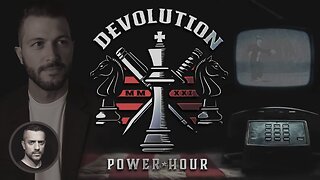 LIVE
LIVE
Badlands Media
21 hours agoDevolution Power Hour Ep. 387
6,911 watching -
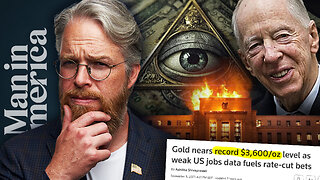 1:05:23
1:05:23
Man in America
10 hours agoSoaring Gold Exposes the Imminent Crash of the Old System w/ John Perez
24.9K2 -
 LIVE
LIVE
TruthStream with Joe and Scott
11 hours agoTHOMAS AND GROK: AI, Bible decodes, The JESUS Cube live 9/6: 7pm pacific 10 pm Eastern
312 watching -
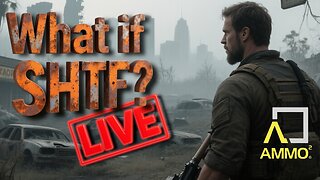 LIVE
LIVE
BlackDiamondGunsandGear
5 hours agoGet Prepped / After Hours Armory / LIVE SHOW /
77 watching -
 DVR
DVR
Tundra Tactical
4 hours ago $0.70 earned🛑LIVE NOW!! This spits in the face of the Second Amendment.🛑
9.01K -
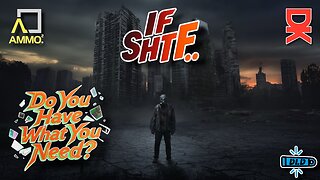 LIVE
LIVE
DLDAfterDark
3 hours ago $0.01 earnedIt's SHTF! Do You Have What You Need?? Let's Review Items & Priorities
129 watching -
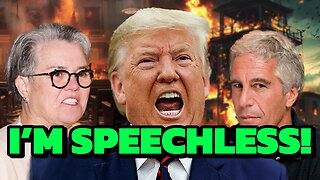 28:58
28:58
Stephen Gardner
4 hours ago🚨Explosive allegations: Rosie O’Donnell connects Trump to Epstein scandal!?
11.4K38 -
 LIVE
LIVE
SavageJayGatsby
1 day agoSpicy Saturday | Let's Play: Grounded
476 watching -
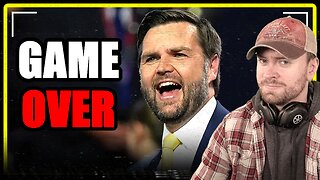 2:06:27
2:06:27
MattMorseTV
5 hours ago $0.79 earned🔴Vance just went SCORCHED EARTH.🔴
117K157 -
 46:41
46:41
The Mel K Show
10 hours agoMel K & Corey DeAngelis | The Hopelessly Captured Teacher’s Unions: Biggest Threat to Our Children & Future | 9-6-25
28.4K4